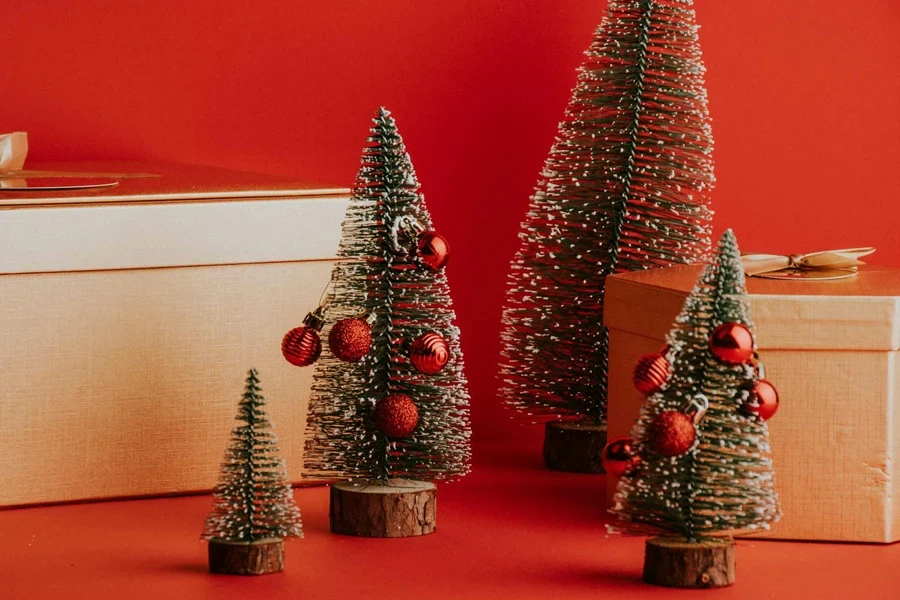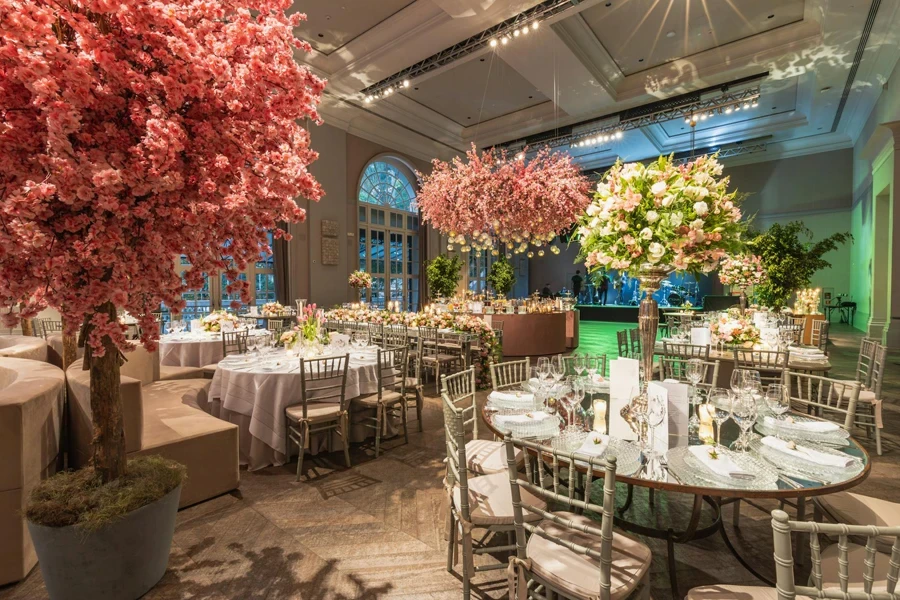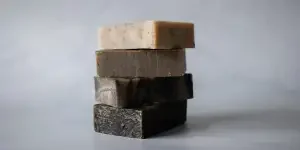Table of Contents
• Introduction
• Market overview
• Different types and their features
• Things to consider when selecting products
• Conclusion
Introduction
Artificial trees have become a staple in home and business decor, offering the beauty of nature without the hassle. The artificial plants market is experiencing significant growth, driven by advancements in design and technology. Various types, from ficus to eucalyptus, provide unique features suitable for different aesthetic needs. Essential tips for selecting suitable artificial trees ensure businesses and homeowners make informed decisions. This article delves into market insights, explores diverse types, and offers expert selection advice.
Market overview

Market scale and growth
The artificial plants market has demonstrated substantial growth over recent years. Valued at USD 0.82 billion in 2022, it is projected to reach USD 1.51 billion by 2032, growing at a compound annual growth rate (CAGR) of 4.18%. This growth is driven by an increasing demand for low-maintenance greenery, advancements in product design and technology, and the widespread adoption of artificial plants in both residential and commercial spaces. These factors are enhancing the appeal and functionality of artificial plants, making them a popular choice for indoor and outdoor decor.
Regionally, North America leads the market, benefiting from advanced manufacturing technologies and a strong preference for artificial greenery in residential and commercial settings. Europe and the Asia-Pacific region also exhibit significant growth, fueled by a higher income population and the rising trend of festival celebrations incorporating artificial plants. The artificial plants market is segmented into various categories, including stem flowers, whole plants and trees, wood and branches, and grass. Among these, whole plants and trees hold the majority share due to their extensive use in enhancing the aesthetic appeal of interiors and exteriors alike.
Different types and their features

Ficus trees
Ficus trees are renowned for their glossy leaves and dense foliage, making them a versatile choice for various interior styles. These artificial trees often feature a combination of polyester fabric leaves and polyethylene plastic trunks, ensuring durability and a lifelike appearance. Available in heights ranging from 4 to 10 feet, ficus trees can fit seamlessly into both small and large spaces. They are designed to mimic the intricate branching patterns of natural ficus trees, adding a touch of sophistication to any setting.
Palm trees
Palm trees provide a tropical aesthetic, ideal for creating an exotic feel in any setting. Constructed with UV-resistant materials, these trees are suitable for both indoor and outdoor use. The fronds are typically made from silk or high-grade plastic, designed to replicate the delicate arching leaves of natural palms. Available in various species such as Areca, Kentia, and Coconut, artificial palm trees range from 5 to 12 feet in height, making them ideal for creating a lush, tropical environment in both residential and commercial spaces.
Bonsai trees
Bonsai trees, known for their miniature size, add a touch of elegance and sophistication to any decor. These artificial trees often use a combination of wire and plastic to shape the branches, allowing for intricate and realistic designs. The leaves are made from premium silk or latex, which provides a natural look and feel. Available in various species such as Ficus, Juniper, and Pine, bonsai trees typically stand between 1 to 3 feet tall, making them suitable for desktop displays or small decorative accents.
Artificial bamboo
Artificial bamboo is a good choice for zen-inspired decor and screening purposes. These trees are constructed using natural bamboo canes combined with polyester or plastic leaves, ensuring a realistic appearance and durability. They are available in heights ranging from 4 to 10 feet, with dense foliage that provides effective privacy screening. The UV-resistant materials make them suitable for both indoor and outdoor applications, maintaining their vibrant green color even under direct sunlight.
Artificial fruit trees
Artificial fruit trees, including decorative options like lemon and orange trees, offer a vibrant and natural look to any space. These trees feature lifelike fruits made from good-quality foam or plastic, painted with detailed colors to mimic real fruit. The leaves are often made from silk or polyester, providing a realistic texture. Available in heights from 3 to 8 feet, these trees add a cheerful and fresh appearance to kitchens, dining areas, and patios.
Artificial topiary
Topiary trees are classic-style plants often used to add a touch of sophistication to any space. These trees are crafted using a metal frame wrapped with UV-resistant plastic or silk leaves, allowing for precise shaping and durability. Common shapes include spirals, balls, and cones, available in heights from 3 to 7 feet. The dense foliage and intricate designs make topiary trees ideal for formal gardens, entryways, and indoor spaces requiring a refined decorative element.
Artificial eucalyptus
Eucalyptus trees are currently on-trend, known for their beautiful, muted blue-green leaves. These artificial trees use a combination of real wood trunks and good-quality silk or plastic leaves to achieve a natural look. Available in heights from 4 to 9 feet, eucalyptus trees are designed to mimic the delicate, rounded leaves of natural eucalyptus plants. Their subtle color and graceful appearance make them ideal for creating a calming ambiance in bedrooms, bathrooms, and living areas.
Things to consider when selecting products

Indoor vs. outdoor use
Selecting the right artificial tree involves considering whether it will be used indoors or outdoors. Outdoor artificial trees should be constructed with UV-resistant materials to prevent degradation from prolonged sun exposure. These trees often feature additional treatments to withstand various weather conditions, such as rain and wind, ensuring they remain durable and aesthetically pleasing over time. Indoor trees, however, can utilize a broader range of materials, including high-grade plastics and silk, which do not require UV protection but offer a realistic appearance suitable for climate-controlled environments.
Realism and material
The level of realism needed for artificial trees is dependent on their intended placement and use. High-traffic areas, such as hotel lobbies or corporate offices, benefit from trees made with advanced materials like polyethylene and latex blends, which replicate the intricate textures of natural bark and leaves. These materials provide a lifelike appearance that can endure frequent interaction and scrutiny. Conversely, areas with less foot traffic, such as storage rooms or distant view locations, can use more economical materials like basic plastics and polyester, which still maintain a pleasing look without the high cost of premium materials.
Placement and size
Accurate measurements of the intended space are critical when selecting artificial trees. Consideration should be given to the tree’s height, width, and volume of its foliage, along with any additional height added by pots or planters. For example, trees intended to fill a room corner should have sufficient height and fullness to create visual interest without overwhelming the space. Additionally, the density of the foliage affects the perceived size; denser foliage can create a more substantial appearance, while sparser foliage can keep smaller spaces from feeling cluttered. These factors ensure that the artificial tree integrates seamlessly into the intended environment.
Color and style
Choosing the appropriate color and style of artificial trees is essential to match existing decor. Trees with vibrant green foliage can inject freshness and energy into a space, whereas trees with muted or variegated tones, such as eucalyptus, provide a more subdued and sophisticated look. When selecting colors, it is important to consider the overall color scheme of the area. For instance, a brightly colored artificial fruit tree can serve as a striking focal point in a neutral-toned room, whereas in more colorful settings, selecting trees with complementary or contrasting hues can enhance the aesthetic without causing visual disruption.
Maintenance requirements
Artificial trees are favored for their low maintenance, but specific upkeep considerations are still necessary. Outdoor artificial trees require periodic application of UV protection sprays to maintain their color and structural integrity. Indoor trees typically need regular dusting and occasional cleaning with mild soap and water to keep them looking pristine. Artificial trees with natural wood trunks may require annual sealing or staining to prevent moisture damage and cracking. Understanding these maintenance requirements ensures that artificial trees remain attractive and durable features in their respective environments.
Conclusion

Artificial trees provide a versatile and low-maintenance solution to incorporating natural beauty into any environment. By comprehending market trends, the variety of available types, and essential selection criteria, businesses and homeowners can effectively choose the ideal artificial tree to enhance their spaces. This informed approach ensures that the selected trees not only meet aesthetic and functional needs but also contribute to the overall ambiance and appeal of the setting.



